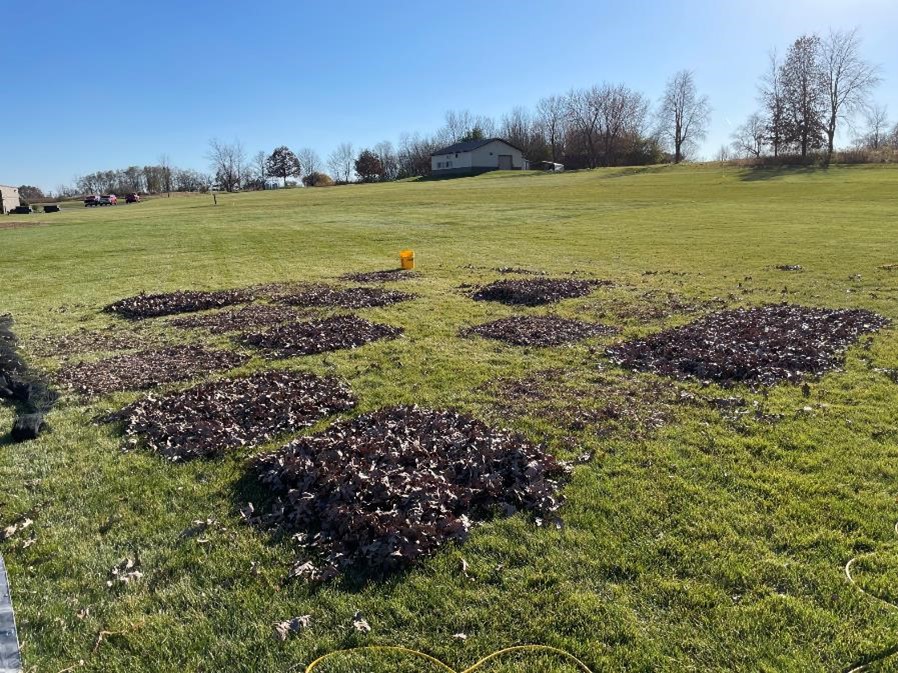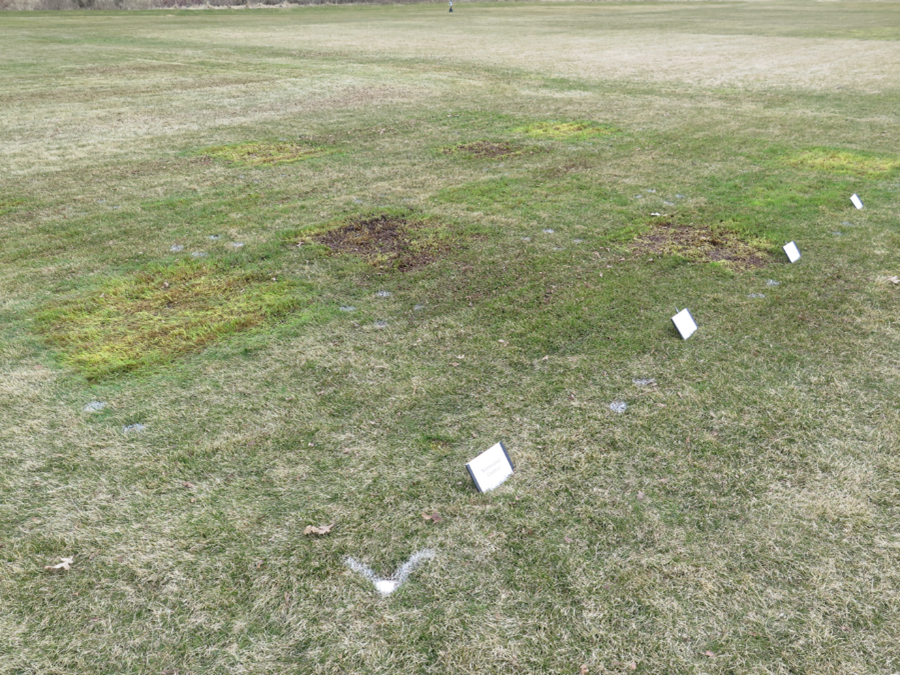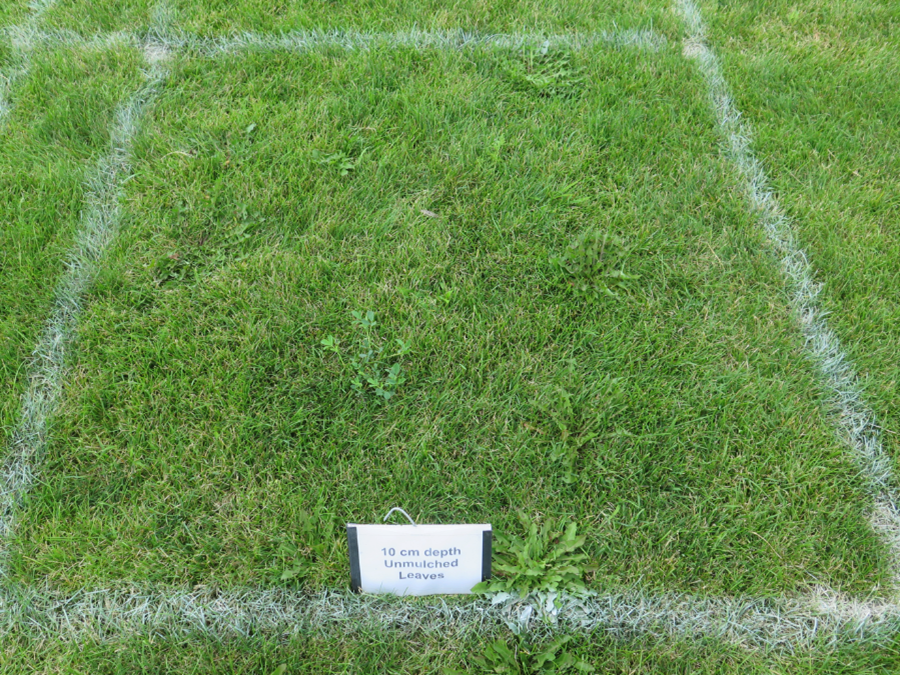By Paul Koch, PhD, University of Wisconsin – Madison
Much of the US is in the midst of beautiful fall foliage, but as those leaves fall to the ground, they can cause some serious environmental problems. A US Geological Survey study commissioned by the Clean Lakes Alliance in Madison, WI found that nearly 80% of the annual phosphorus load into Madison lakes came from tree leaves piled on the street for pickup in the fall. Mulching these tree leaves into lawns could reduce phosphorus leaching into lakes and also reduce the municipal labor costs required to pick up the curbside leaves, but the potential impact of leaving those tree leaves on lawn health in the spring is poorly understood.

As part of our USDA-funded WinterTurf research project we are investigating the impact of multiple depths of mulched and non-mulched tree leaves on turfgrass quality, snow mold development, and multiple soil health metrics such as soil respiration. The study was initiated in the fall of 2022 and is being conducted at research locations in Madison, WI and East Lansing, MI. Leaves were either mulched using a mulching lawn mower or left unmulched and piled at a depth of 2 inches (buried within the turf canopy) or at a depth of 6 inches (fully covering the turfgrass) (Figure 1).

Snow mold and turfgrass quality results were collected during the spring of 2023 and those treatments where the leaves were mulched were in excellent health, even at the deeper leaf depth, while the deeper level of unmulched leaves caused serious damage to the turf (Figure 2). Multiple additional differences between treatments were still evident during the middle of summer. First, the plots damaged by the leaf smothering had mostly fully recovered (Figure 3); however, there were higher levels of weeds in these plots because there was open canopy in the spring while the turfgrass recovered from the damage. The other important aspect was that the grass in the plots with the heavier depth of leaves, both mulched and unmulched, was a darker green color for much of the summer. This is likely due to nutrient release from the greater level of organic matter present on those plots and also potentially due to higher water holding capacity in those plots due to the higher organic matter content. This study will be going on for several more years, but after just one year we’re starting to get a feel for the multiple possible benefits available to the turf when tree leaves are mulched into a lawn in the fall.
